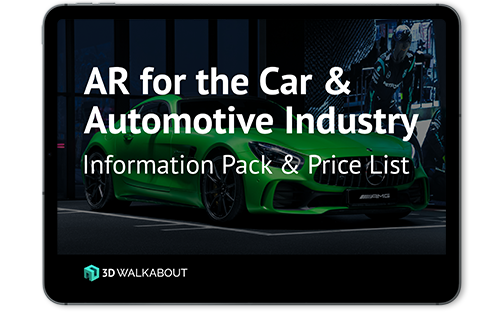AR for the Car Industry
3D Walkabout is an Australian based AR studio that designs AR apps for the Automotive & Car Industry .

Augmented Reality (AR) for the Automotive & Car Industry
In manufacturing and production, AR can streamline the car building process by providing real-time guidance to assembly line workers, reducing errors, and improving efficiency. It allows technicians to visualise complex components, access digital manuals, and perform remote troubleshooting. Car dealers and resellers can leverage AR to create immersive experiences for potential customers. They can showcase virtual showrooms, allowing customers to virtually explore and customise vehicles, enhancing the purchasing decision-making process. Additionally, AR technology can be integrated into car windshields, providing drivers with heads-up display content, such as navigation directions and important vehicle information, promoting safer and more convenient driving experiences.
What are the benefits of AR for the automotive & car Industry?
Allows manufacturers to visualise a car in early development stages.
Offers customers new and exciting ways to engage with products.
Shows you’re always willing to embrace the technology of the future
Provides an online store where people may test-drive digital cars.
Reduces design and prototype costs by allowing for minor tweaks.
Offers more convenience, which helps to gain a customer’s loyalty.
Promotes smart shopping, leading to more sales and fewer returns.
Allows workers to check a car’s assembly instructions on demand.
Shows a step-by-step guide for easily repairing certain car models.
Gives customers a virtual, and accessible, manual for their vehicle.
How is AR currently being used by automotive & car companies?
Car production plants and dealerships across and beyond Australia are beginning to embrace the future by accommodating augmented reality into their operations. During the design stage, it’s possible for makers to look at the full design in 3D before they even start the first prototype, with AR configurators providing a realistic visualisation of what the car will look like. This means the company can notice any potential tweaks sooner, and the designers might also reconsider certain design choices after seeing the vehicle in a 3D space. By making these changes before prototyping, manufacturers could save a significant amount of money.
The online marketplace is another possibility that AR accommodates, with some car dealerships allowing their potential customers to test drive the cars in a digital showroom environment. This massively improves a user’s experience and allows them to make smarter purchasing decisions with less opportunity for buyer’s remorse – this means both sides of the transaction are able to benefit from the added convenience. There are many ways your business or dealership could use augmented reality, and this use often translates to more sales, making it a helpful investment that improves a vehicle’s appeal while giving the customer more options before buying

Brainstorm your ideas on 1300 00 3392
If you’d like to receive our full ‘AR for the Car & Automotive Information Pack & Price List’ please add your details below.
The industries we work in
AR Automotive & Car Industry Case Studies
No Results Found
The page you requested could not be found. Try refining your search, or use the navigation above to locate the post.
Automotive & Car Industry News & Articles
Automotive & Car Industry Videos
Frequently Asked Questions
Is augmented reality used in self-driving cars?
Self-driving cars use augmented reality to train their safety services; digital vehicles ride beside the car as it calculates how to avoid collisions. This improves how these cars operate in hazardous or congested conditions, giving customers the peace of mind they need to trust self-driving cars to keep them safe.
Which car has augmented reality?
Augmented reality features are currently available in some BMW models, but the potential exists for any car or vehicle to benefit from this innovative technology. When it comes to car manufacturing or repairs, any car can use augmented reality, allowing it to provide high-quality 3D designs and guides for technicians.
Do cars use augmented reality?
Many of these augmented reality applications come during manufacture and repair – but some AR cars already exist, using the technology to improve their safety features. This uses a vehicle’s built-in camera to generate a real-time view of the road ahead, with indicators of when to switch lanes.
Is augmented reality used in self-driving cars?
Self-driving cars use augmented reality to train their safety services; digital vehicles ride beside the car as it calculates how to avoid collisions. This improves how these cars operate in hazardous or congested conditions, giving customers the peace of mind they need to trust self-driving cars to keep them safe.
How does augmented reality affect the automotive industry today?
AR is an emerging technology in the automotive industry; one that’s still growing and finding more applications by the day. Manufacturers and technicians currently use AR to realise their design plans in 3D, make changes before the prototype stage, offer a virtual showroom for customers, and repair cars more easily.
Which car has augmented reality?
Augmented reality features are currently available in some BMW models, but the potential exists for any car or vehicle to benefit from this innovative technology. When it comes to car manufacturing or repairs, any car can use augmented reality, allowing it to provide high-quality 3D designs and guides for technicians.
Do cars use augmented reality?
Many of these augmented reality applications come during manufacture and repair – but some AR cars already exist, using the technology to improve their safety features. This uses a vehicle’s built-in camera to generate a real-time view of the road ahead, with indicators of when to switch lanes.
What is augmented reality in the automotive industry?
Augmented reality is a way of using technology to superimpose virtual images into a real environment, typically with special glasses or a camera-enabled screen of some kind. In this industry, AR automotive technology aids and facilitates the assembly, selling, and repair of cars, trucks, vans, motorcycles, and other vehicles.






























